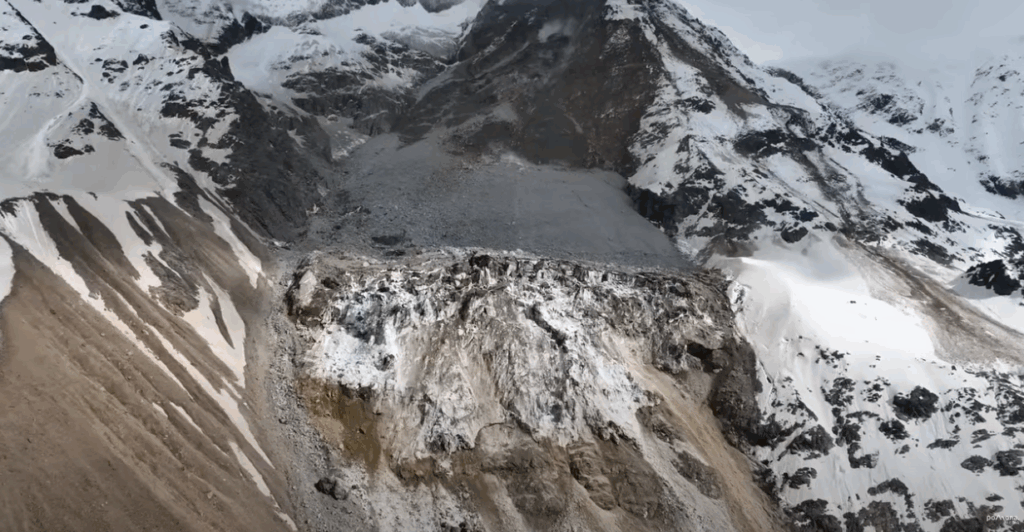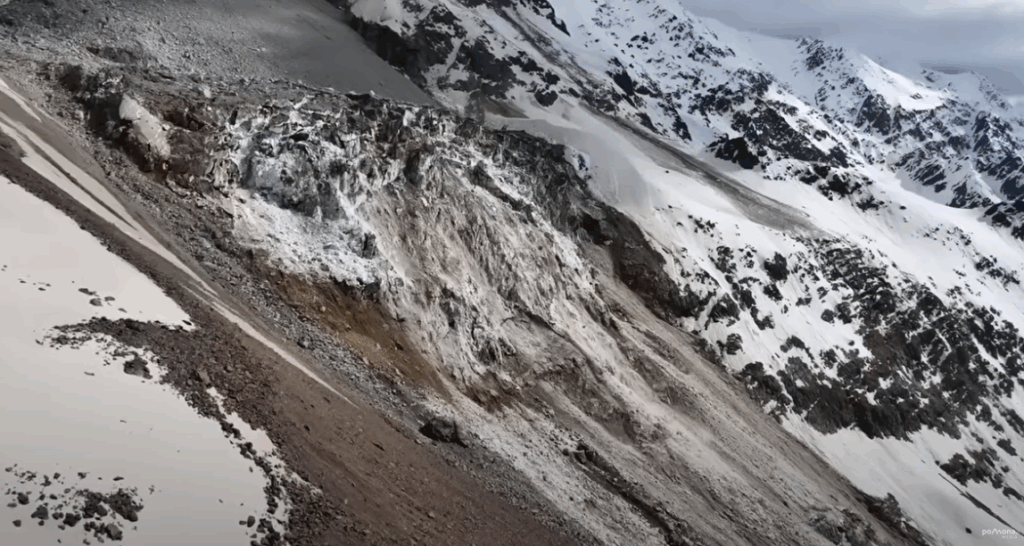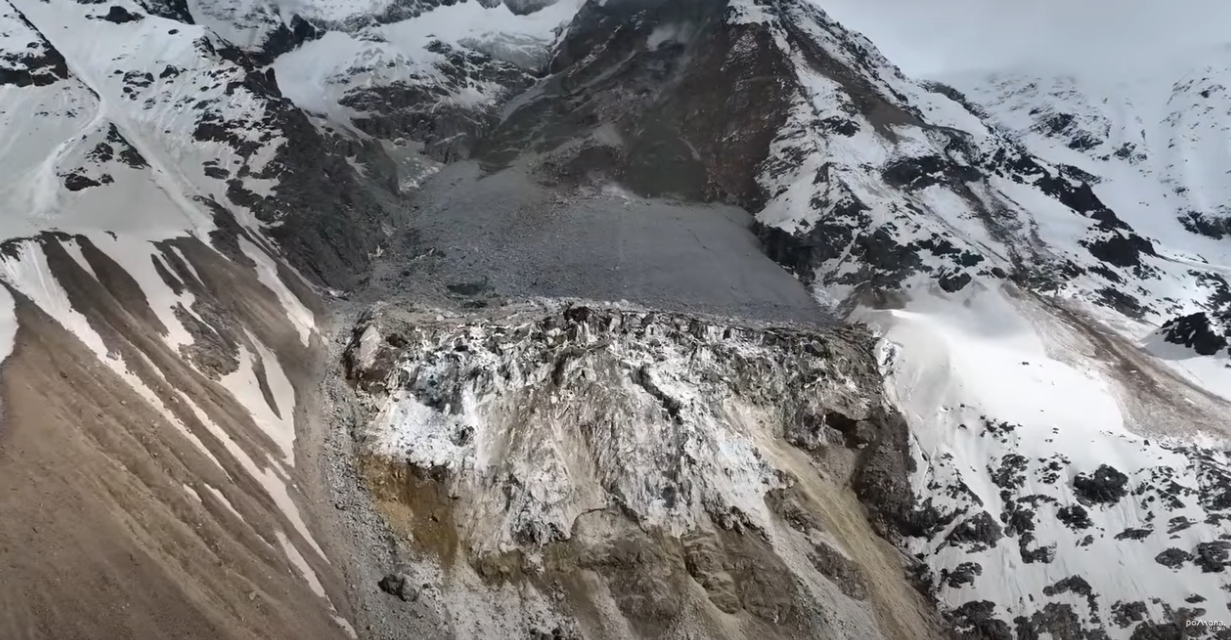The Landslide Blog is written by Dave Petley, who is widely recognized as a world leader in the study and management of landslides.
Over the last 24 hours there have been further developments in the situation on the slopes above Blatten in Switzerland, with attention continuing to focus primarily on the Birch Glacier.
Yesterday evening (27 May 2025), the largest collapse to date occurred at the front of the glacier – as a reminder, this is currently moving at about 10 metres per day as a result of the loading, estimated at 9 millions tonnes, from the rockslide debris. The toe of the glacier abuts a steep slope, so these movements render it inevitable that collapses will occur.
This still, from the Pomona Media video, captures the situation beautifully:-

The active rock slope is very clearly visible in the background, with some dust from ongoing collapses. The huge volume of debris sitting on the glacier is evident in the middle of the image, with the ice of the mobile glacier in the foreground, above the steep lower slope.
The start of the video, which captures a small collapse, also shows the heavy fracturing in the ice:-

RTS has a nice article reviewing the situation. This includes a video that captures one of the major collapses of the front of the glacier – it is rather spectacular.
There are probably three central scenarios at this point (to be clear, this is my interpretation, not that of the team on-site), although of course reality is rather more messy that this in general:-
- A further major collapse from the Kleine Nesthorn mobilises the debris on the glacier, and the glacier itself, to generate a major flow. This is probably the worst case scenario, but the likelihood looks to be lower than it was a week ago.
- The glacier itself collapses, creating a rock and ice avalanche, which cascades down the slope. This would be a major event, but would have the advantage of removing the hazard. There would be a risk to some of the houses in Blatten.
- There are continued smaller (although not trivial) collapses of the front of the glacier. This could continue for some time until a new equilibrium is reached. This is the scenario that leads to the lowest probability of damage, but it is also means that the risk to the village lasts longer.
I have no means to assess the likelihood of each of the above (and there will be other scenarios in play), but for me (based purely on experience) the most likely at this point is scenario 3.
At the time of writing, it is beautiful morning at Blatten, so the webcam is capturing good images.
As always, it is easy to fixate on the natural processes occurring above Blatten, but this is a very human story too. The population of the village is displaced indefinitely, with the possibility of losing their houses to the disaster. Fortunately, domestic property insurance in Switzerland includes a natural perils pool, so losses to a landslide are likely to be covered (this would not be the case in the UK). This will be of little comfort right now.
But, secondly, the expert team monitoring the slope will also be under immense pressure. They will be getting little sleep at the moment. They are under intense scrutiny, but are also working with many unknowns. No matter how good their data is, it will not be sufficient to accurately anticipate what is going to happen next.



